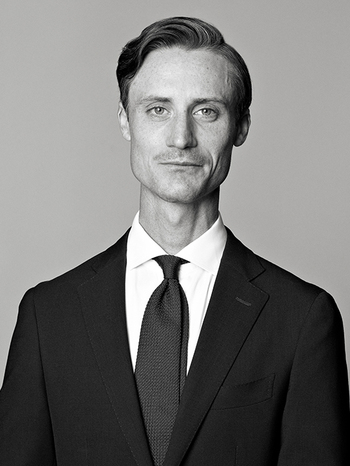Ernst Josephson
"David och Saul"
Signed E Josephson. Executed 1876-1878. Sketch for a painting with the same title executed in 1878, in the collections at Nationalmuseum, Stockholm (NM 1805). Oil on panel 15.5 x 23.5 cm.
Provenance
Mrs Maja Hedberg-Braathen, Bjärsjölagård (1898‑1973), Sweden.
Private Collection.
Exhibitions
Liljevalchs konsthall, Stockholm, ”Ernst Josephson. Minnesutställning”, 1951, cat. no. 106 (listed as belonging to Mrs Maja Hedberg-Braathen).
Prins Eugens Waldemarsudde, Stockholm, ”Ernst Josephson”, 14 November 1991 ‑ 1 March 1992, cat. no. 26.
Prins Eugens Waldemarsudde, Stockholm, ”Ernst Josephson”, 13 October 2001 ‑ 13 January 2002, cat. no. 20.
Literature
Karl Wåhlin, Ernst Josephson - en minnesteckning, 1911, p. 161.
Svenska hem i ord och bilder, 1934, illustrated p. 165, and mentioned p. 166.
Erik Blomberg, Ernst Josephson, 1945, illustrated no. 6.
Per-Olov Zennström, Ernst Josephson - en studie, 1946, mentioned p. 88, illustrated fig. 13.
Erik Blomberg, Ernst Josephson - hans liv, 1951, mentioned p. 210, illustrated on colour plate.
Erik Blomberg, Ernst Josephsons konst - Historie-, porträtt- och genremålaren, 1956, mentioned p. 93.
Erik Blomberg, Ernst Josephsons konst - Från Näcken till Gåslisa, 1959, listed in catalogue supplement p. 402.
Hans Henrik Brummer, Ernst Josephson - utställningskatalog, Prins Eugens Waldemarsudde, 1991, illustrated s. 58, and listed in catalogue no. 26, p. 177.
Hans Henrik Brummer, Ernst Josephson - Målare och diktare, 2001, listed in catalogue with cat. no 20, p. 2
More information
Ernst Josephson's interpretation of the biblical theme "David and Saul" is a unique composition with a strong autobiographical undertone. The tormented King Saul and the bright, soothing apparition of David, playing his harp, reflect the artist's own turbulent inner world. Josephson had encountered a series of personal setbacks, suffered from syphilis at a young age, and was plagued by romantic troubles and feelings of guilt. The longing to paint himself free was strong and luminous.
The first sketch for "David and Saul" was painted in Holland as early as 1876 after Ernst Josephson had studied Rembrandt's painting on the same theme. However, the final work was completed two years later in Italy. By then, the artist had left Rembrandt behind to be inspired by Italian painting, which idealised religious scenes, mythology, and classical beauty.
His inner turmoil culminated in the poem "David and Saul" - "I have come, O king, at your bidding, to still your heavy sorrow, to sing of life's roses, to sing of God!". The motif has also been interpreted as an unresolved longing for love, something that the painting shares with Josephson's central motif of Näcken.
At the retrospective exhibition of Ernst Josephson at Liljevalchs konsthall in Stockholm in 1951, two smaller sketches of the motif were shown (cat. no 99 and cat. no 106) as well as the final painting "David and Saul", 110 x 143 cm, with cat. no 105.









































